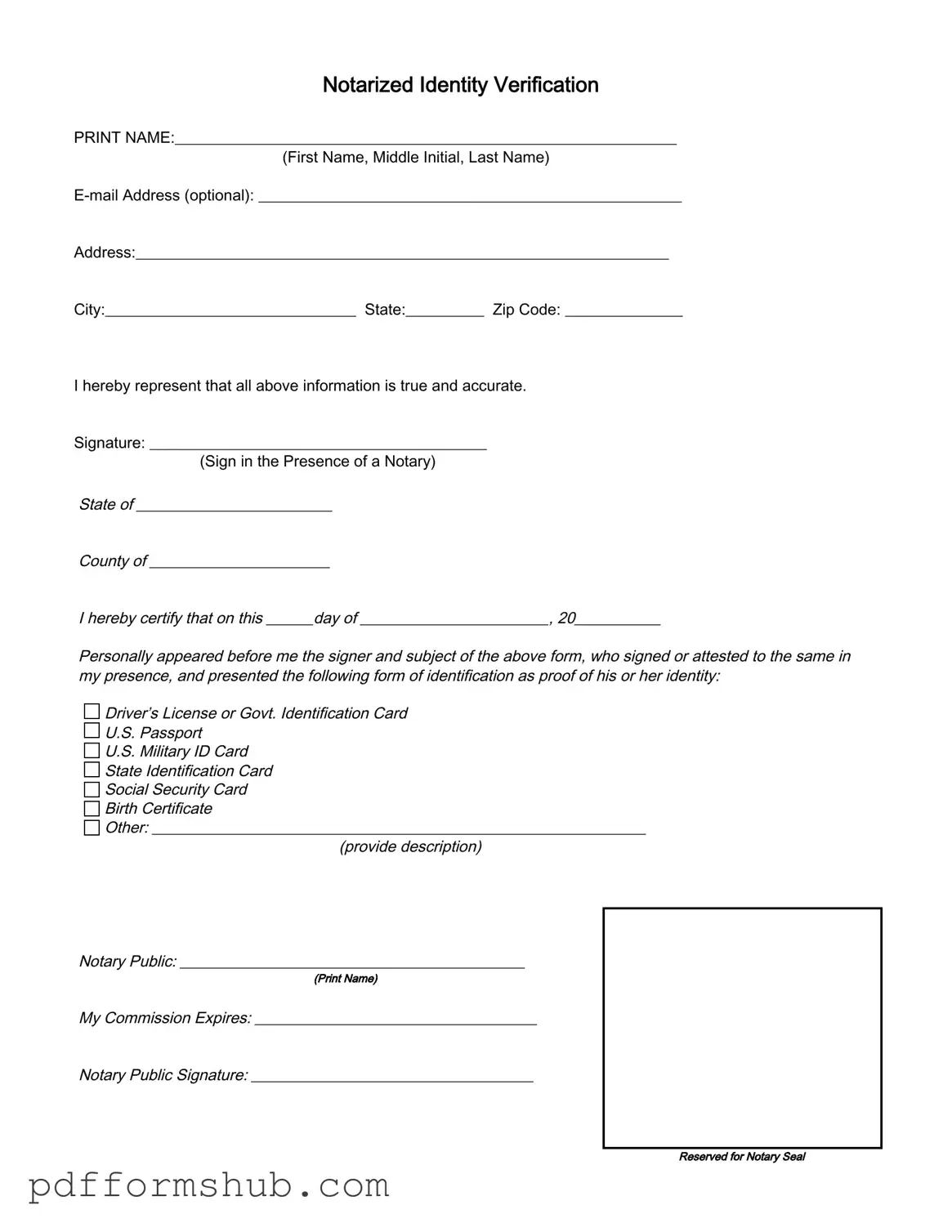The Notarized Identity Verification form serves as a crucial tool for confirming an individual's identity in various situations. It requires the signer to provide essential personal details, including their full name, optional email address, and residential address. This form emphasizes the importance of accuracy, as the signer must affirm that the information given is true. A signature is required, but it must be completed in the presence of a notary public, ensuring the authenticity of the verification process. The notary public plays a key role, certifying that the signer has appeared before them and has presented valid identification, which may include options such as a driver’s license, U.S. passport, or military ID. Additionally, the form allows for the inclusion of other forms of identification if necessary. The notary's details, including their name and commission expiration, are also recorded, along with a space reserved for the notary seal, further validating the document. This comprehensive approach helps to prevent identity fraud and ensures that transactions requiring identity verification are conducted securely.
